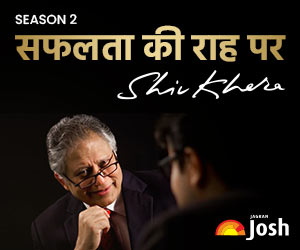Physics Class 10 Practical Viva Questions: Viva voce questions are a significant part of the CBSE Class 10 Science practical exam, so students must be prepared to answer them clearly and confidently. These questions assess students’ understanding of Physics concepts and principles, as well as their practical knowledge and laboratory skills. To prepare, students should review the practical experiments they have performed, familiarize themselves with the Science syllabus, and practice answering viva voce questions.
Here, we have provided important Physics viva questions and answers for Class 10 Practical Exam 2024. These questions cover almost all important concepts from the CBSE Class 10 Physics Practical Syllabus 2023-24. However, questions are also important for the students appearing in the Class 10 exams of ICSE and other state boards. Check the top 20 viva questions for Class 10 Physics to prepare for the upcoming Class 10 Science Practical Exam.
Also Read: CBSE Class 10 Science Practical Syllabus 2023-24
Top 20 Class 10 Physics Viva Questions With Answers
Q.What is the difference between a scalar and a vector quantity?
A: A scalar quantity has only magnitude, while a vector quantity has both magnitude and direction.
Q.What is the SI unit of force?
A: The SI unit of force is the newton (N).
Q.What is Newton’s second law of motion?
A: Newton’s second law of motion states that the acceleration of an object is directly proportional to the net force acting on it and inversely proportional to its mass.
Q.What is the difference between mass and weight?
A: Mass is the measure of the amount of matter in an object, while weight is the force of gravity acting on an object.
Q.What is the principle of moments?
A: The principle of moments states that the sum of the moments of all the forces acting on a body is equal to zero.
Q.What is the difference between work and power?
A: Work is the transfer of energy from one object to another, while power is the rate at which work is done.
Q.What is the law of conservation of energy?
A: The law of conservation of energy states that energy cannot be created or destroyed, but it can be transformed from one form to another.
Q.Which four precautions must be taken while performing an experiment to verify Ohm’s law?
A: (i) All connections should be kept tight.
(ii) The zero error in the ammeter and voltmeter should be noted down and taken into consideration while taking readings for the measurement.
(iii) The bare ends of the connecting wires should be rubbed and cleaned properly with sandpaper.
(iv) The value of the current through the circuit should be kept as low as possible to avoid heating of the resistor.
Q.What is the difference between a conductor and an insulator?
A: A conductor is a substance that allows electricity to pass through it, while an insulator is a substance that does not allow electricity to pass through it.
Q.What is the principle behind the experiment you performed to verify Ohm’s law?
A: The voltage across a conductor is directly proportional to the current through it provided that all physical conditions and temperature remain the same.
Q.What is the significance of the slope of the graph in the experiment to plot a graph of the dependence of potential difference across a resistor on current?
A: The slope of the straight line gives the resistance of the resistor.
Q.How do you connect the resistors in series and in parallel in the experiment to find the equivalent resistance?
A: In a series arrangement, resistors are connected end-to-end while in a parallel circuit, the terminals of resistors are connected to the same two nodes.
Q.What is the difference between a series circuit and a parallel circuit?
A: In a series circuit, the components are connected in a line, one after the other, while in a parallel circuit, the components are connected in branches.
Q.What is the difference between a convex lens and a concave lens?
A: A convex lens bends light rays towards each other, while a concave lens bends light rays away from each other.
Q.What are the sources of error in the experiment you performed to determine the focal length of a convex mirror?
A:Two major sources of error are:
(i)The uprights are not ideally vertical.
(ii)The pole of the mirror, the tip of the object needle and the optical centre are not placed in a line.
Q.What is the difference between a real image and a virtual image?
A: A real image is formed when light rays from an object converge at a point, while a virtual image is formed when light rays appear to diverge from a point but do not actually converge.
Q.What is the difference between refraction and reflection of light?
A: Reflection is the bouncing back of light when it strikes a smooth surface. Refraction is the bending of light rays when it travels from one medium to another.
Besides practising with these questions, it’s important to be familiar with all of the concepts covered in the Class 10 Physics syllabus so that you can answer questions clearly and concisely.
|
Download Class 10 Physics Viva Question & Answers in PDF (Link to be updated) |
Also Read:
CBSE Class 10 Science Mind Maps for Quick Revision
CBSE Class 10 Science Important MCQs
CBSE Class 10 Science Revision Notes: Based on Revised Syllabus
